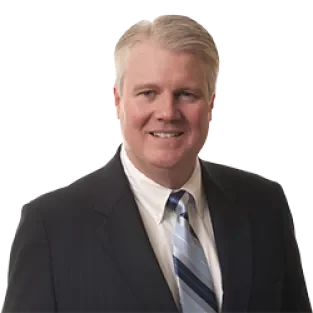ASAP
OSHA Seeks to Step Up Enforcement of Criminal Penalties
The Occupational Safety and Health Administration (OSHA) is making it clear that in 2005 and 2006 it will be devoting additional resources to criminal prosecutions of management, and that it intends to focus more of its enforcement efforts on employers with high-gravity citations. These objectives are part of an increased emphasis by OSHA to vigorously pursue those employers the agency deems to be "bad actors," and to use the full range of its powers under the Occupational Safety and Health Act to pursue criminal violations.
Criminal Prosecutions
In a clear sign that OSHA is focusing increased efforts on enforcement of criminal penalties, the agency has referred a record number of cases to the Department of Justice (DOJ) for criminal prosecution. Specifically, in the most recent two-year period, OSHA referred 18 cases to the DOJ – a level that has not been seen for nearly 15 years.
OSHA is seeking to boost its emphasis on cases that may be referred for criminal prosecutions in several ways. For example, OSHA has for the first time in two years revised its instructions on fatality and catastrophe investigation procedures. (Directive Number CPL 02-00-137). The April 2005 Directive states that "the agency places a very high priority on fatality and catastrophe investigations, which demand a high degree of sensitivity and investigative accuracy." OSHA defines a catastrophe as an occupational incident in which three or more employees are admitted to the hospital.
The April 2005 Directive further emphasizes that the circumstances surrounding every occupationally-related fatality "will be evaluated to determine whether the fatality was caused by a willful violation of a standard, thus creating the basis for a possible criminal referral." The Directive goes on to explain that cases will be referred to OSHA's Regional Solicitor for potential criminal prosecution where there is a fatality; there is evidence that a violation of an OSHA standard contributed to the fatality; and "there is reason to believe that the employer was aware of the requirements of the standard and knew that he was in violation of the standard, or that the employer was plainly indifferent to employee safety."
Further, according to the Acting Assistant Secretary of Labor for OSHA, Jonathan L. Snare, OSHA is providing specialized training for its compliance officers in order to "better address cases that might be referred for criminal prosecution." The specialized training includes participation by experienced compliance officers in two-week courses that teach the core concepts and principles of criminal law. Assistant Secretary Snare has stated that OSHA's "goal is to make sure that our compliance officers understand how to conduct effective investigations to ensure that we have the information and evidence prosecutors need should the cases go to court." As a message to those employers considered by OSHA to be the "bad actors," Assistant Secretary Snare warned that "perhaps the threat of felony charges and significant criminal penalties will persuade them to do the right thing – or avoid doing the wrong thing."
Enhanced Enforcement Program
OSHA is also seeking to put more teeth into its Enhanced Enforcement Program – and to use the program as another avenue to pursue criminal prosecutions of corporate officers. The Enhanced Enforcement Program, originally announced back in 2003, was designed for use against employers who have a history of serious safety and health violations. Specifically, the Enhanced Enforcement Program (known as "EEP") focuses on employers with high gravity willful citations; multiple serious violations at the high gravity level; repeat violations; failure to abate notices; and serious or willful violations associated with fatalities. In 2004, OSHA conducted over 310 inspections under its EEP, and more than 80% of those cases involved fatalities with high-gravity violations.
According to Solicitor of Labor Howard Radzely, in 2005 and 2006 OSHA will increasingly emphasize several aspects of the EEP. Specifically, OSHA will conduct follow-up inspections of egregious violators even if the employer had verified that the problem in question had been abated. In addition, for these same employers, Radzely stated that the DOL would "send a message" to employers by emphasizing their responsibility to maintain safe working environments by inspecting other worksites owned by the employer to determine whether the same violations were being committed at those locations. Next, instead of simply notifying corporate headquarters that a violation had been committed at one of its facilities, the DOL intends to take this one step further and ensure that corporate headquarters are directly involved. As Radzely stated, OSHA seeks to "make a real effort to reach up to the top levels of the corporation to let them know . . . they do need to address [the problems]."
Finally, Radzely has emphasized the success that the DOL has experienced with its summary enforcement powers. Pursuant to Section 11(b) of the OSH Act, the DOL can include language in settlement agreements in which employers consent to a court enforcement order in cases where the employer has violated the terms of a settlement agreement. Section 11(b) also allows the DOL to apply to federal courts for orders summarily enforcing high-gravity citations that have become final orders by means other that settlement. Prior to 2003, the DOL did not use its summary enforcement powers pursuant to Section 11(b). However, the Solicitor's Office has recently filed thirteen summary enforcement motions in federal court. Representative of the spotlight that OSHA is directing toward certain employers, Radzely recently predicted that "bad actors will pay, and pay dearly."
Employer Recommendations
In light of OSHA's emphasis on criminal prosecutions and OSHA's effort to tighten down further on employers who are deemed to have a history of safety problems, employers should use this as an opportunity to carefully review the effectiveness of their safety procedures -- and to remind everyone what is at stake. Employers who do experience any serious workplace accident should immediately investigate the matter and involve all appropriate company advisors from the outset. Finally, employers with multiple locations should carefully coordinate safety initiatives, ensure that they consistently communicate safety procedures throughout the company, and proactively address potential safety concerns that may arise in various operations.
Thomas M. L. Metzger is a Shareholder in Littler Mendelson's Columbus, Ohio office, and Steven G. Biddle is a Shareholder in Littler's Phoenix, Arizona office. If you would like further information, please contact your Littler attorney at 1.888.Littler, info@littler.com, Mr. Metzger at tmetzger@littler.com, or Mr. Biddle at sbiddle@littler.com.



